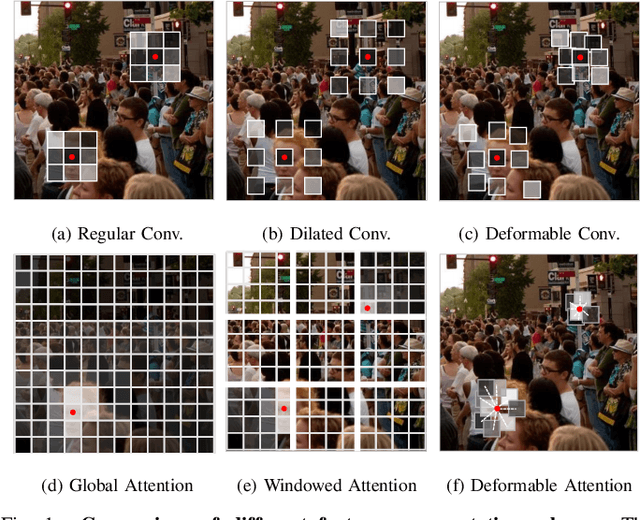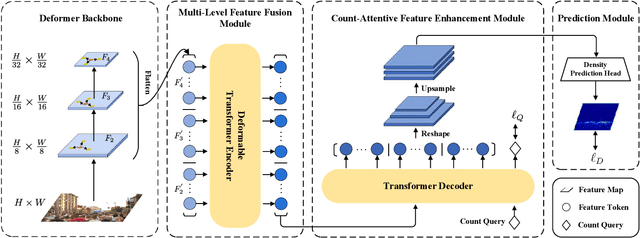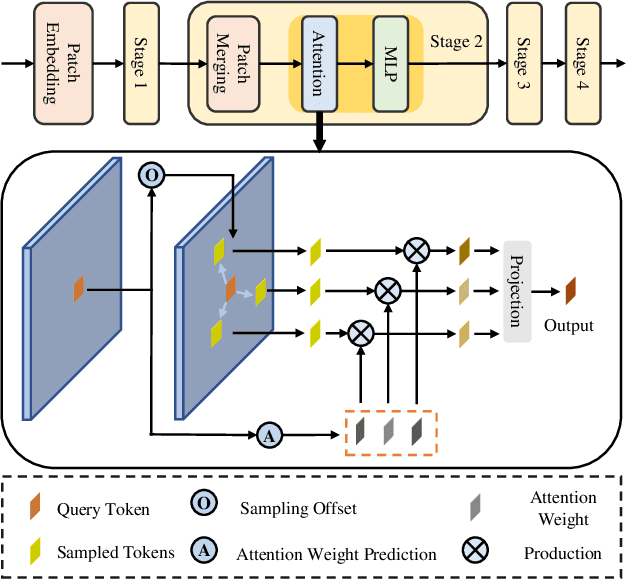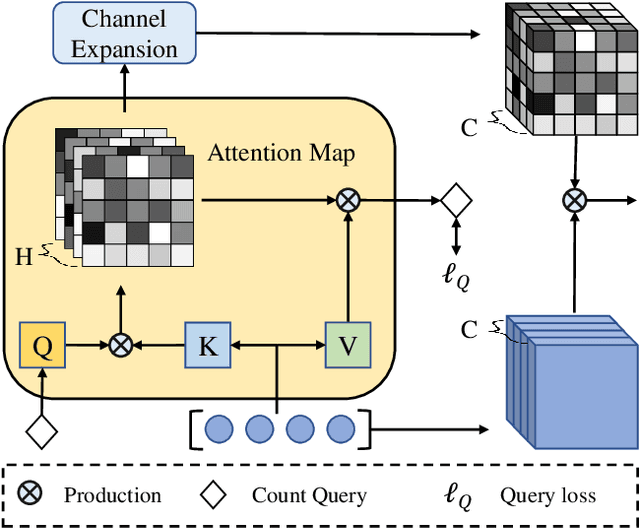Yunfeng Qiu
Scene-Adaptive Attention Network for Crowd Counting
Dec 31, 2021



Abstract:In recent years, significant progress has been made on the research of crowd counting. However, as the challenging scale variations and complex scenes existed in crowds, neither traditional convolution networks nor recent Transformer architectures with fixed-size attention could handle the task well. To address this problem, this paper proposes a scene-adaptive attention network, termed SAANet. First of all, we design a deformable attention in-built Transformer backbone, which learns adaptive feature representations with deformable sampling locations and dynamic attention weights. Then we propose the multi-level feature fusion and count-attentive feature enhancement modules further, to strengthen feature representation under the global image context. The learned representations could attend to the foreground and are adaptive to different scales of crowds. We conduct extensive experiments on four challenging crowd counting benchmarks, demonstrating that our method achieves state-of-the-art performance. Especially, our method currently ranks No.1 on the public leaderboard of the NWPU-Crowd benchmark. We hope our method could be a strong baseline to support future research in crowd counting. The source code will be released to the community.
Direct Measure Matching for Crowd Counting
Jul 04, 2021



Abstract:Traditional crowd counting approaches usually use Gaussian assumption to generate pseudo density ground truth, which suffers from problems like inaccurate estimation of the Gaussian kernel sizes. In this paper, we propose a new measure-based counting approach to regress the predicted density maps to the scattered point-annotated ground truth directly. First, crowd counting is formulated as a measure matching problem. Second, we derive a semi-balanced form of Sinkhorn divergence, based on which a Sinkhorn counting loss is designed for measure matching. Third, we propose a self-supervised mechanism by devising a Sinkhorn scale consistency loss to resist scale changes. Finally, an efficient optimization method is provided to minimize the overall loss function. Extensive experiments on four challenging crowd counting datasets namely ShanghaiTech, UCF-QNRF, JHU++, and NWPU have validated the proposed method.
 Add to Chrome
Add to Chrome Add to Firefox
Add to Firefox Add to Edge
Add to Edge